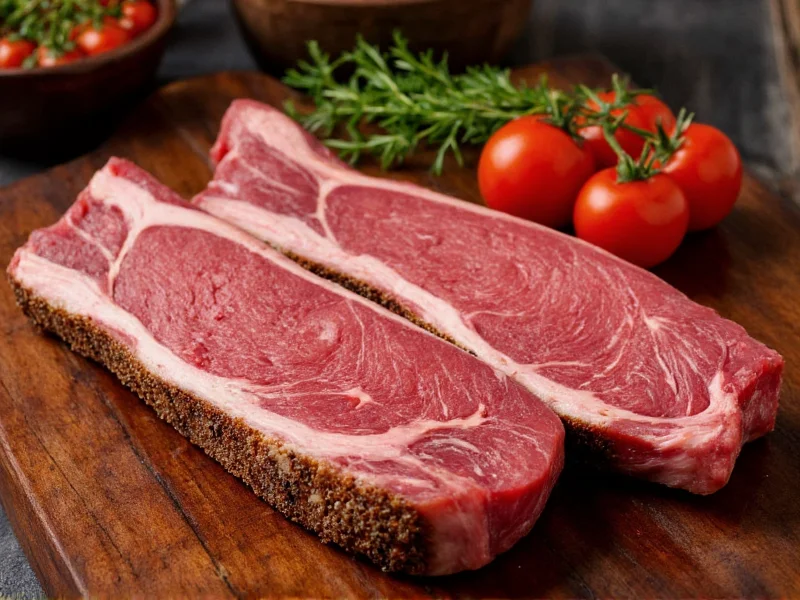Understanding the differences between beef back ribs and short ribs is essential for selecting the right cut for your cooking needs. These two popular rib cuts vary significantly in anatomy, flavor profile, cooking requirements, and final texture.
Anatomical Differences Between Rib Cuts
Beef back ribs originate from the rib primal section along the animal's back, specifically between the 6th and 12th ribs. Butchers remove these after harvesting the ribeye steak, leaving behind the rib bones with attached meat. Each rack typically contains 6-13 bones with substantial meat between them.
Short ribs, despite their name, come from the lower chest area (plate primal) or near the front leg (brisket area). These cuts feature shorter bones surrounded by dense muscle and significant marbling. Unlike back ribs, short ribs contain multiple layers of meat separated by connective tissue.
| Characteristic | Beef Back Ribs | Short Ribs |
|---|---|---|
| Source Location | Rib section (near spine) | Plate or brisket area |
| Bone Length | Longer bones (6-12 inches) | Shorter bones (3-6 inches) |
| Meat Composition | Leaner with less marbling | Richer marbling, more connective tissue |
| Typical Weight per Rack | 1.5-3 pounds | 2-4 pounds |
Flavor and Texture Comparison
When comparing beef back ribs vs short ribs, the flavor profiles differ substantially due to their fat content and muscle composition. Back ribs deliver a more delicate beef flavor with subtle marbling. The meat remains relatively tender when cooked properly but can become dry if overcooked.
Short ribs offer a richer, beefier flavor thanks to their higher fat content and marbling. The connective tissue transforms into gelatin during slow cooking, creating that signature melt-in-your-mouth texture that makes short ribs so prized. This difference in texture explains why short ribs command higher prices despite their tougher raw state.
Optimal Cooking Methods for Each Cut
The cooking technique you choose makes all the difference when working with these rib cuts. Understanding beef back ribs cooking methods versus short ribs preparation techniques prevents disappointing results.
Beef back ribs respond well to dry-heat cooking methods. Many professional chefs recommend the 3-2-1 method for perfect back ribs: three hours of smoking, two hours wrapped in foil, and one hour with sauce. Grilling over indirect heat at 225-250°F until the internal temperature reaches 190-203°F yields tender results without drying out the leaner meat.
Short ribs absolutely require wet-heat, slow-cooking techniques. Braising in liquid for 2.5-3 hours at 300°F breaks down the tough collagen into gelatin, transforming the meat into fork-tender perfection. Pressure cooking short ribs reduces this time to 45-60 minutes while achieving similar results. Attempting to grill short ribs without proper preparation results in chewy, tough meat that's difficult to enjoy.
Price and Availability Considerations
When comparing beef back ribs vs short ribs price points, short ribs typically cost 20-30% more per pound. This price difference reflects both the richer flavor profile and the additional processing required to prepare short ribs properly.
Availability varies by region and season. Back ribs appear more consistently in supermarkets since they're a byproduct of ribeye steak production. Short ribs have gained popularity in recent years, making them more widely available, though specialty cuts like English-cut versus flanken-cut short ribs may require visiting a dedicated butcher.
When to Choose One Cut Over the Other
Selecting between beef back ribs and short ribs depends on your cooking timeline, equipment, and desired outcome:
- Choose back ribs when: You want a quicker cooking time (3-6 hours), prefer a leaner cut, have access to a smoker or grill, and desire that classic "fall-off-the-bone" rib experience
- Choose short ribs when: You're planning a special meal with longer cooking time (2.5-8 hours), want maximum flavor intensity, enjoy melt-in-your-mouth texture, and have braising equipment available
Many professional chefs maintain both cuts in their repertoire. Back ribs work well for casual weekend barbecues, while short ribs shine in elegant dinner preparations where time isn't a constraint.
Common Preparation Mistakes to Avoid
Both cuts suffer from common preparation errors that home cooks should avoid. For beef back ribs, removing the membrane (silver skin) from the bone side improves tenderness and allows rubs to penetrate better. Many beginners skip this step, resulting in less flavorful ribs.
With short ribs, insufficient cooking time represents the most frequent mistake. The meat must reach an internal temperature of 200-205°F to properly break down connective tissues. Rushing the process leaves the meat tough and chewy rather than tender. Additionally, proper searing before braising develops complex flavors through the Maillard reaction.
Nutritional Comparison
From a nutritional standpoint, beef back ribs contain less fat than short ribs. A 3-ounce serving of cooked back ribs provides approximately 250 calories and 18 grams of fat, while the same portion of short ribs contains about 300 calories and 24 grams of fat. Both cuts offer significant protein (around 20 grams per serving) and essential nutrients like iron, zinc, and B vitamins.
For health-conscious consumers, trimming visible fat from short ribs before cooking reduces the final fat content. Alternatively, chilling braised short ribs allows easy removal of solidified fat from the cooking liquid before reheating.











 浙公网安备
33010002000092号
浙公网安备
33010002000092号 浙B2-20120091-4
浙B2-20120091-4